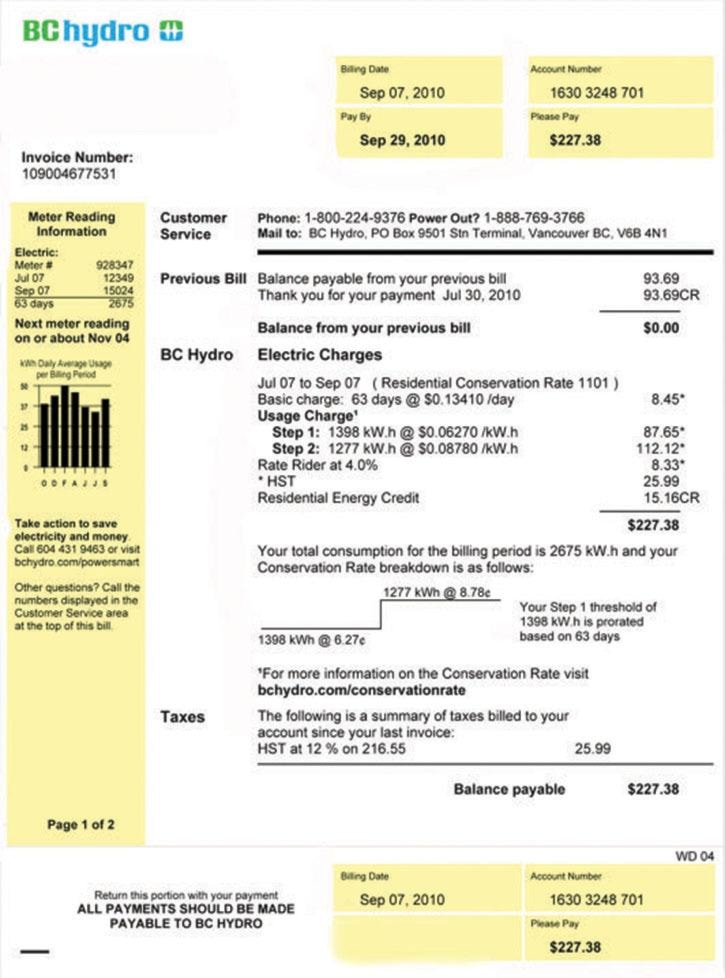If you've ever been unable to pay your B.C. Hydro bill, you are not alone.
According to the B.C. public interest advocacy centre (BCPIAC) - representing seven advocacy groups in the province -, B.C. Hydro's rate increases have grossly outpaced increases in income for low-income British Columbians.
"B.C. Hydro residential electricity rates have increased by 51 per cent in the last 10 years," says a statement by BCPIAC. "People living in poverty have a hard time paying for essential services such as electricity when their incomes are stagnant."
The B.C. utilities commission (BCUC) is holding a public hearing in Vancouver this month to review B.C. Hydro’s rate design application. In this process, the BCUC will hear evidence and submissions from intervener groups such as BCPIAC to determine rate structures and terms and conditions.
The BCPIAC is suggesting the adoption of low income customer rules such as waiver of security deposits, more flexible payment arrangements, elimination of late payment fees and suspension of disconnections during cold weather periods.
The BCPIAC is also asking for the creation of a crisis assistance fund for customers who are unable to pay for their electricity bills.
According to BCPIAC, B.C. Hydro offers no rates or terms and conditions that specifically apply to low-income customers.
"The only programs available to these customers are energy saving kits and in more limited cases, energy efficiency audits and certain home upgrades; while these programs are important, they are not offsetting B.C. Hydro’s rate increases."
Sarah Khan, one of the lawyers at BCPIAC who is bringing this issue to the BCUC, said about 10 per cent of B.C. Hydro residential customers live below Statistics Canada’s low income cut-off, which translates to about 170,000 customers.
“Our proposals will help to mitigate the impact of B.C. Hydro’s never-ending rate increases," she said.
Earlier this year, B.C. Hydro rates increased by four per cent. This was the third year of a 10-year plan for rate increases. Rates are on track to be increased by another 6.5 per cent in the next two years, and in the final five years of the plan, rates are expected to increase by 2.6 per cent per year.
According to B.C. Hydro, many of their facilities were built in the 1960s, 70s and 80s; therefore they must make investments in aging infrastructure and new projects to meet growing demand for power.
"Population increase and economic growth are two of the key reasons we need to add both capacity and energy to the system," explained Kevin Aquino, a spokesperson with B.C. Hydro. "We are forecasting that B.C.’s electricity needs will grow by almost 40 per cent over the next 20 years."
B.C. Hydro is investing, on average, $2 billion a year, to upgrade aging assets and build new infrastructure, including the Site C project and installing a new unit at the Revelstoke generating station. Without these two projects, B.C. Hydro says the province would face a capacity deficit of almost 10 per cent within the next 10 years.
In addition, many of B.C. Hydro's industrial customers are facing declining prices for the commodities they produce, which means B.C. Hydro has had a loss in revenue of $3.5 billion since 2013. B.C. Hydro says they've taken several actions to reduce costs, and that even with the current rate increases, their rates remain among the lowest in North America.
The BCPIAC is representing seven advocacy groups, including active support against poverty, B.C. old age pensioners’ organization, B.C. poverty reduction coalition, council of senior citizens’ organizations of B.C., disability alliance B.C., together against poverty society and tenant resource and advisory centre.
